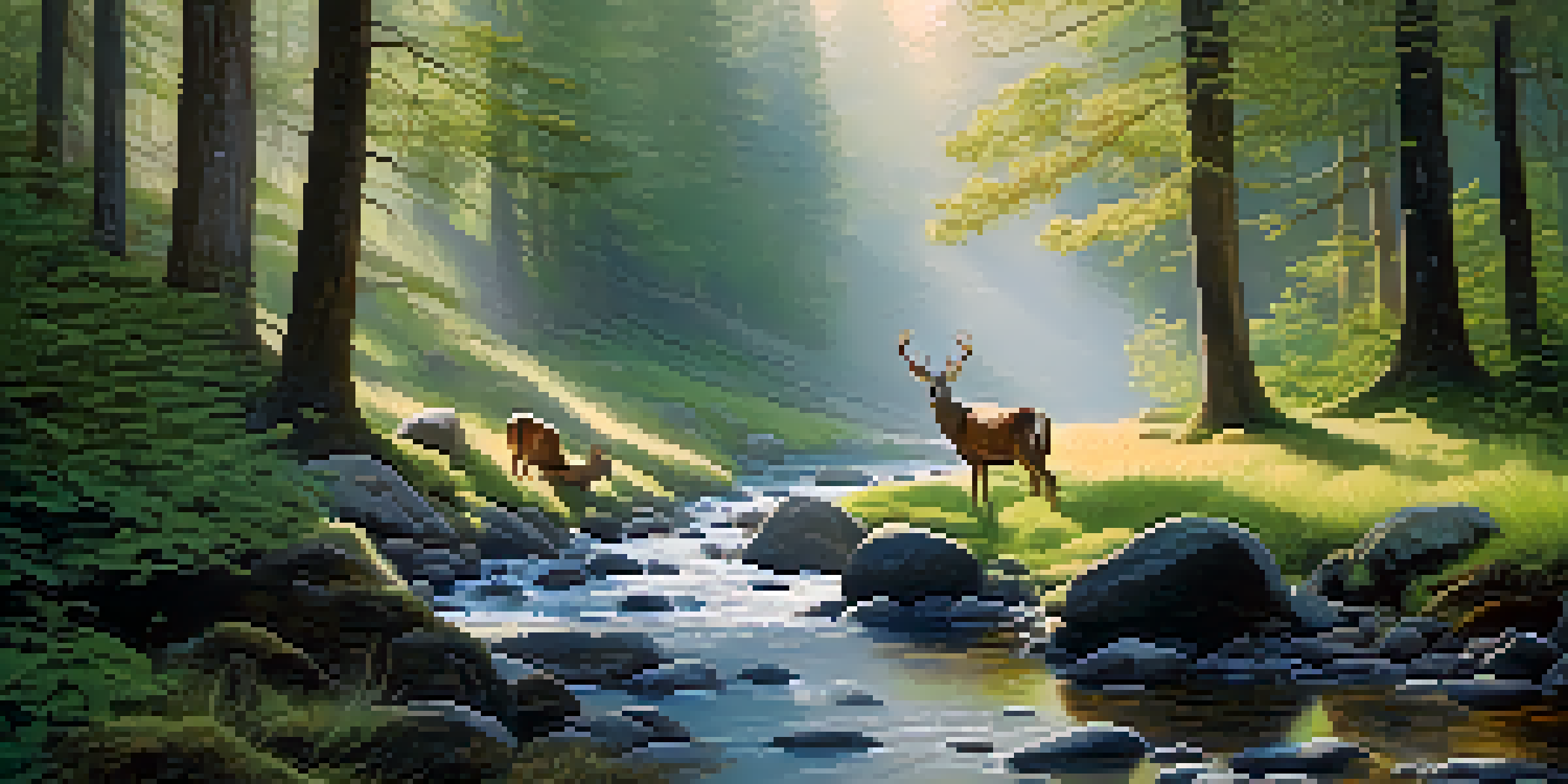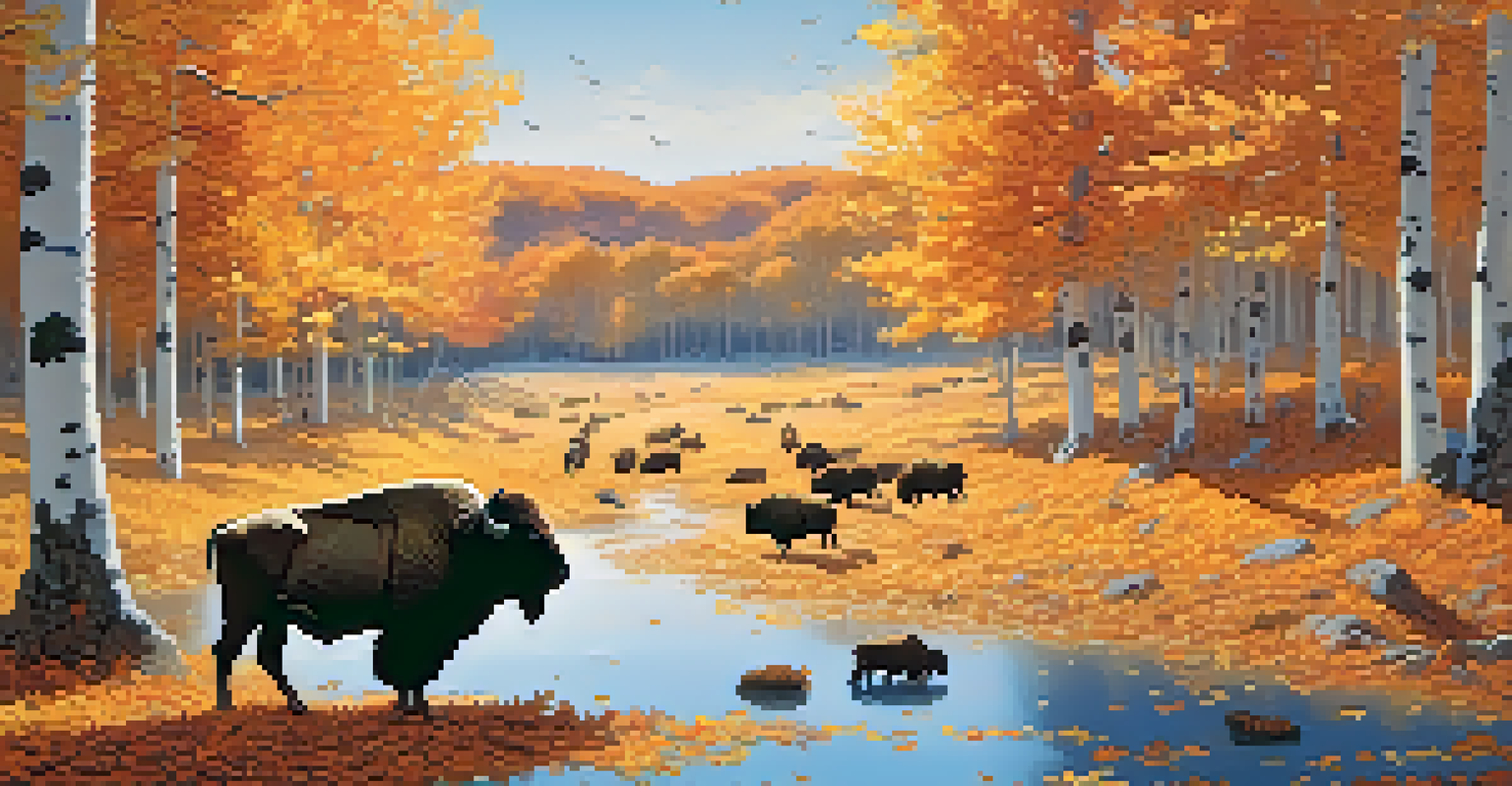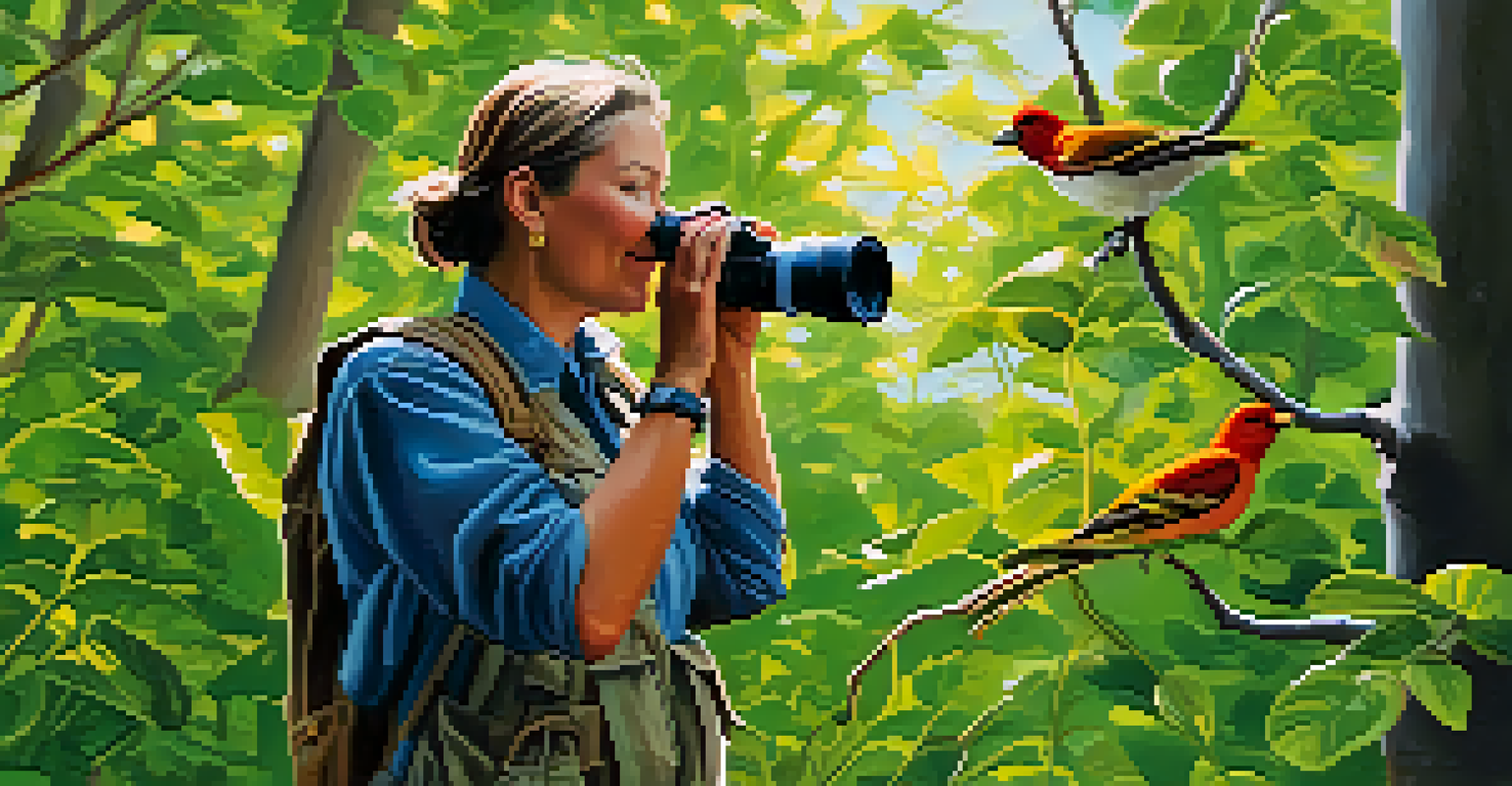Wildlife Spotting in National Parks: What to Look For

Understanding Wildlife Behavior for Better Spotting
To enhance your wildlife spotting experience, it's essential to understand animal behavior. Different species have unique habits, such as feeding times and mating seasons, which can influence when and where they are visible. For example, many animals are most active during dawn and dusk, known as crepuscular activity, making these times ideal for spotting.
In every walk with nature one receives far more than he seeks.
Moreover, certain animals may retreat to their dens or nests during the heat of the day, while others might be more active in cooler weather. Observing patterns in their movement can help you pick the best locations to search for them. Taking time to learn about the specific wildlife in the park you’re visiting can greatly increase your chances of seeing them.
Related Resource
Lastly, patience is key. Spending time quietly in one spot can pay off as you wait for animals to appear. Remember, wildlife spotting is often about enjoying the journey, not just the destination.
Best Times of Year for Wildlife Spotting
Different seasons offer unique wildlife viewing opportunities in national parks. Spring is an exciting time as animals emerge from hibernation, and many species are busy with their young. This is a great time to spot baby animals, like bison calves or bear cubs, making for adorable sightings.

Summer brings vibrant activity, with many animals out and about, but it can also mean higher temperatures that might drive some creatures to seek shade. Fall is particularly spectacular, as migratory birds pass through, and animals prepare for winter, often becoming more visible as they gather food. Each season has its charm, making it worthwhile to plan your visit accordingly.
Understand Wildlife Behavior
Learning about animal habits and activity patterns enhances your chances of spotting wildlife.
Winter might seem quiet, but don’t underestimate it! Many animals adapt to the cold and can be spotted in their winter coats. Plus, the stark beauty of snow-covered landscapes can provide a stunning backdrop for wildlife photography.
Essential Gear for Wildlife Spotting
Having the right gear can make all the difference when it comes to wildlife spotting. Binoculars are a must-have for observing animals from a distance without disturbing them. A good pair can enhance your experience, allowing you to see intricate details that would otherwise be missed.
Look deep into nature, and then you will understand everything better.
In addition to binoculars, bringing a camera with a zoom lens can help capture the moments you encounter. Whether it's a majestic elk or a playful otter, having the ability to document these experiences will create lasting memories. Don't forget to pack a field guide or wildlife app to help identify different species you might come across.
Related Resource
Lastly, comfortable clothing and sturdy footwear are essential, as you'll often be hiking or walking to find the best viewing spots. Being prepared will allow you to focus on the wildlife rather than the discomfort of your gear.
Respecting Wildlife and Their Habitats
While spotting wildlife can be exhilarating, it’s crucial to respect the animals and their habitats. Staying a safe distance from wildlife not only protects you but also ensures that the animals don’t feel threatened. Approaching too closely can disrupt their natural behaviors and stress them out.
Following park guidelines is essential for protecting both wildlife and the environment. Many parks have specific rules regarding how close you can get to animals and where you can go. By adhering to these regulations, you contribute to preserving the delicate balance of the ecosystem.
Seasonal Wildlife Opportunities
Each season offers unique wildlife viewing experiences, making it important to plan your visits accordingly.
Additionally, remember to leave no trace by taking all your trash with you and avoiding disturbing plants or other natural features. By being a responsible visitor, you help ensure that future generations can enjoy the beauty of wildlife in national parks.
Common Wildlife to Spot in National Parks
National parks are home to a diverse array of wildlife, each offering unique spotting opportunities. In many parks, you might encounter iconic animals like deer, bears, and bison, which often roam freely. Knowing what animals are prevalent in the park you're visiting will help you focus your efforts on the best locations.
Birdwatching can also be a rewarding aspect of wildlife spotting. Many parks boast a variety of birds, from songbirds to raptors, that can be seen throughout the year. Bringing a bird guide or using a birding app can help you identify and appreciate the feathered residents.
Related Resource
Don’t forget about smaller creatures, like foxes, rabbits, and various reptiles, which can often be found in less-visited areas. Every creature plays a role in the ecosystem, and spotting them can add depth to your wildlife experience.
Using Technology to Enhance Your Experience
In today’s digital age, technology can significantly enhance your wildlife spotting adventures. Mobile apps designed for wildlife identification can be a game changer, providing information about different species and their behaviors right at your fingertips. Some apps even offer tracking features, allowing you to log your sightings.
Additionally, using GPS devices or mapping apps can help you find the best trails and viewpoints in the park. Many national parks also provide visitor apps that include maps, alerts, and information on current wildlife activity, making them excellent resources for planning your day.
Respect Wildlife Habitats
Maintaining a safe distance and following park guidelines is crucial for protecting wildlife and their ecosystems.
Social media platforms also allow wildlife enthusiasts to share their experiences and tips, creating a community of like-minded individuals. By connecting with others, you can exchange ideas on the best spots and times for wildlife viewing.
Planning Your Trip for Maximum Wildlife Encounters
Planning your visit is essential for making the most of your wildlife spotting experience. Researching the park beforehand will provide insights into which animals you might see and their typical behaviors. This knowledge can help you create an itinerary that aligns with peak activity times for different species.
Consider joining guided tours or ranger-led programs, which often include expert insights and tips for spotting wildlife. These experiences can enhance your understanding of the ecosystem and increase your chances of encountering animals in their natural habitats.

Finally, flexibility is key. Nature can be unpredictable, and sometimes the best wildlife encounters happen when you least expect them. Allowing yourself some open time to wander can lead to delightful surprises and unforgettable moments.